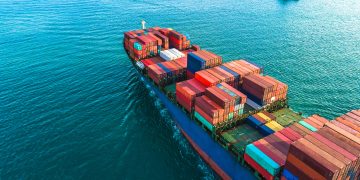Experts review the growing problems caused by micro-plastics
 A team of researchers from Plymouth University and the University of Exeter in the UK published last week a research on microplastic entitled as ”Mircoplastic Moves Pollutants and Additives to Worms Reducing Functions Linked to Health and Biodiversity’‘ . The research reveals that microplastics may transfer toxins such as those that make up flame retardants into the guts of lugworms.
A team of researchers from Plymouth University and the University of Exeter in the UK published last week a research on microplastic entitled as ”Mircoplastic Moves Pollutants and Additives to Worms Reducing Functions Linked to Health and Biodiversity’‘ . The research reveals that microplastics may transfer toxins such as those that make up flame retardants into the guts of lugworms.
Lugworms are marine creatures that live in burrows on beaches across the north Atlantic shoreline. They feed on plankton but are known to consume anything that is filtered through the sand. They act as an important food source for several animals, including curlew and flatfish. They are thought to make up around 30% of the biomass on an average sandy beach site.
Now, scientists have found evidence that microplastics consumed by lugworms are transferring toxins into the lugworms’ bodies, and they appear to be suffering as a result.
Researchers confirmed for the first time that toxins can transfer from these plastics into marine animals. They determined that lugworms experienced a variety of problems as a result of consuming the microplastics and the chemicals they carry, including a reduced ability to feed. This has a knock-on effect as the lugworms effectively filter sand and prevent silt build up. If their ability to filter is hampered, the detritus could build up and impact other animals.
The other important note this research provides is that the microplastic contamination could have an accumulative effect, meaning that animals further up the food chain that are feeding on lugworms and other marine animals could be at risk.(Source:http://www.care2.com)
During this summer, international experts met in London to review the growing problems in the marine environment caused by micro-plastics – tiny pieces of plastic or fibres which may act as a pathway for persistent, bio-accumulating and toxic substances entering the food chain.
|
What micro- plastics are Micro-plastics are tiny pieces of plastic or fibres which may act as a pathway for persistent, bio-accumulating and toxic substances entering the food chain. Micro-plastics are one of the degradation products of all plastics and may be small to very small, including just fibres or strands, with a range of compositions. They tend to fall into one of two categories:
While micro-plastics may not pose an obvious risk to marine life – such as entanglement – due to the small size, nonetheless they may pose chemical or physical risks, especially on micro-fauna. Micro-plastics may also contribute to the transfer of pollutants from seawater to marine life. |
What Can be Done About the Microplastic Problem?
In terms of neutralizing the toxins that have already made their way into marine habitats, that is a difficult question. Certainly, tighter regulations that track how waste plastics are processed is one way of trying to prevent microplastics that we don’t know about getting into the ecosystem. Creating methods to filter microplastics will also be needed. Cutting down on microplastic waste is one other way that we can tackle this problem, and that’s where the general public can take action.
Choosing products that don’t contain microplastic beads is an easy step. For instance, there are a range of simple, organic recipes for exfoliators that can replace store bought varieties. These do not contain microplastics but will likely still have the desired benefits. We can also apply pressure to cosmetic companies and call on them to abandon microplastics and microbeads – after all, harming marine life is far from a beautiful thing. (Source: http://www.care2.com)
Find additional information by clicking at articlesbelow:
Focus on micro-plastics in the marine environment
How Your Choice of Exfoliator Could be Harming Marine Life
IMO websitehttp://www.imo.org/
GESAMP website http://www.gesamp.org/ &IMO- GESAMP
Wikipedia – What micro- plastics are http://en.wikipedia.org/wiki/Microplastics
NOAA Marine Debris – About Microplasticshttp://marinedebris.noaa.gov/projects/microplastic.html#descrip


























































